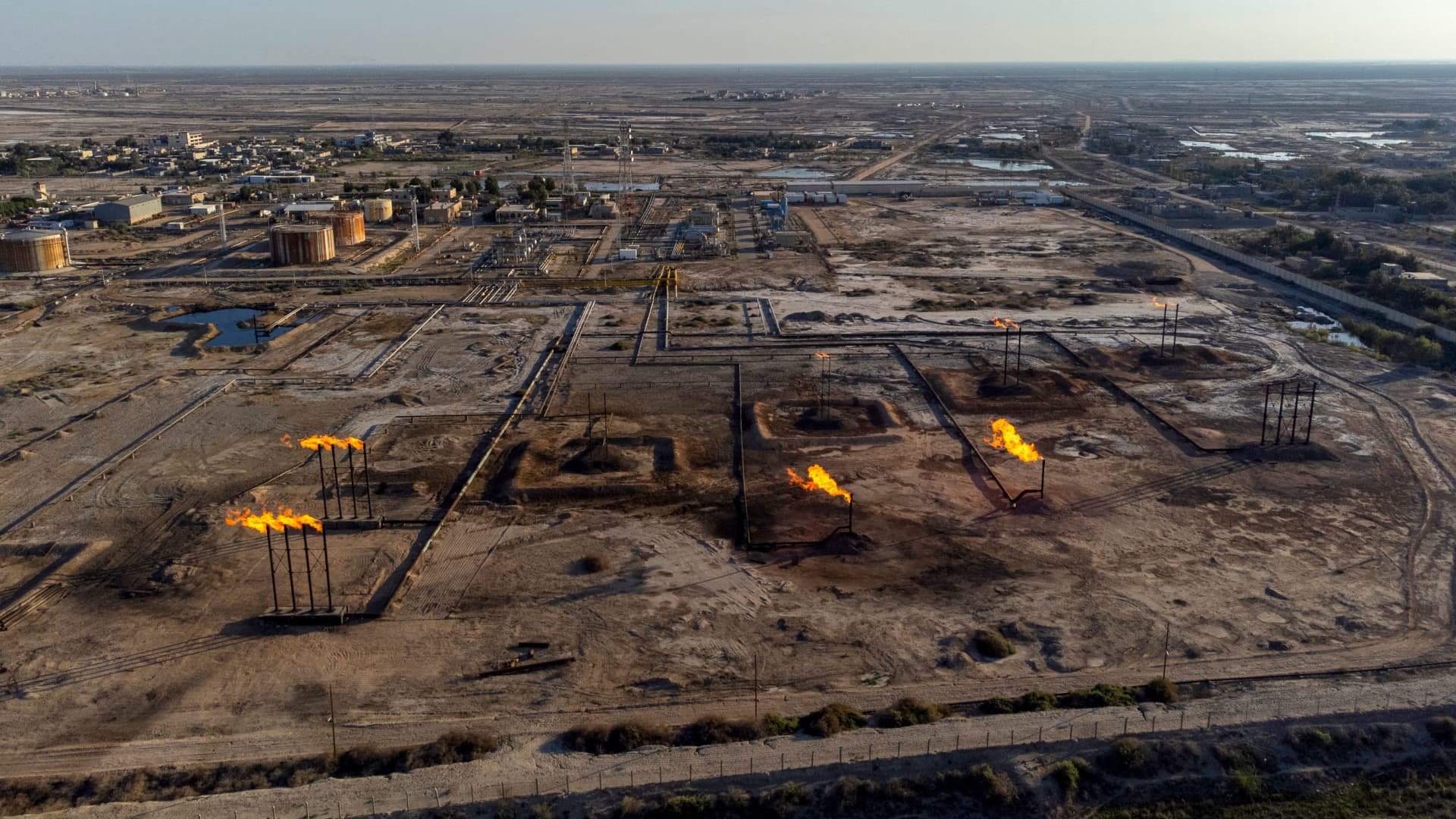Imam Ali Mosque Hit by US, Najaf Battle Goes On
"It’s quite intense. I’ve heard at least 10 explosions,” a Reuters reporter said from inside the compound of the Imam Ali mosque.
Shiite fighters remained in control of the mosque. US tanks were still in the vicinity but were not as close as they were Sunday, when they advanced to within 300 meters of the mosque.
Some shrapnel landed inside the mosque’s courtyard, and some of the blasts sounded like artillery shells, Reuters added.
A US AC-130 gunship also attacked fighter positions across An-Najaf, it added.
Sadr’s Mahdi Army launched Sunday, August 22, multiple attacks on US tanks, parked away from the holy shrine.
Shrine Hit
Al-Jazeera satellite channel broadcast footage of slight damage done to the outer wall of the Imam Ali mosque by the US bombardment on Sunday night.
Sheikh Aws Al-Khafaji, the director of Sadr Office, confirmed to the Doha-based channel that the wall was struck by US tanks.
The attack is expected to enrage millions of Shiites around the world and give Sadr political ammunition in his rebellion against U.S. troops.
Although US troops outpower Sadr’s men with tanks and aerial support, any raid on the shrine could backfire and fuel anti-American sentiment, which is already running high in Iraq, where Shiites make up 60 percent of the population.
On Saturday, August 21, US tanks shelled a mosque in Kufa. The shelling caused a huge hole in the outer wall of the mosque. Part of a the opposite court building was blackened and gutted by fire, with blood smeared on the windows.
Talks to hand over control of the shrine to Grand Ayatollah Ali Al-Sistani, the top Shiite authority in Iraq, was suspended Sunday.
Sistani has been reluctant to take back the shrine without ensuring that nothing is missing and the Mahdi Army is unwilling to surrender control amid any suggestion of impropriety.
Sistani’s office accepted an offer by Sadr Friday, August 20, to take control of the shrine to bring an end to the face-off with US forces since August 5.
But it has stipulated that before it takes control, an inventory must be carried out to make sure the treasures remain in place and intact.
In a letter circulated in Najaf late Thursday, August 19, and signed by the firebrand Shiite leader, Sadr urged his followers to hand over the shrine to the Shiite leadership (Al-Marjiyah or hawaza in Arabic).
The move also came a few hours after interim Prime Minister Iyad Allawi made a “final call” for Sadr to disarm his militia, withdraw from Imam Ali Shrine or face a massive onslaught.
40 Iraqis Killed
Near Najaf, at least 40 Iraqis were killed on Saturday, August 21, in fierce clashes with US occupation forces, the Iraqi interim Interior Ministry announced Sunday.
A ministry official told Reuters US troops had fought battles in the nearby town of Kufa, one of a number of cities where Shiite fighters have risen up this month.
The official said the dead where Mahdi Army fighters and civilians.
The US military also announced Sunday that four Marines assigned to the 1st Marine Expeditionary Force were killed in separate incidents in Iraq’s volatile Anbar province.
Since the start of the war last year to occupy oil-rich Iraq, 714 American troops have been killed in resistance attacks, according to a Reuters toll.
US Journalist Released
Meanwhile, US journalist Micah Garen was on Sunday freed by an Iraqi group who had held him hostage in the southern Iraqi city of Nassiriya.
"I am very grateful to everyone who worked to protect me and guarantee my release and I thank my friends in Nasiriyah and my family and fiancée who spent three months with me in Nasiriyah," Garen told Al-Jazeera by telephone.
He was speaking from the Nasiriyah office of Moqtada Al-Sadr.
"Today he was brought to the office of Sheikh Sadr in Nasiriyah and he is now there. We have called the human rights body in Nasiriyah to come and receive him," Aws Al-Khafaji told the all-news Arabic channel.
Garen, of New York-based company Four Corners Media, said he was seized while taking pictures with a small camera at a market in Nasiriyah.
"People misunderstood what I was taking pictures of. There was a misunderstanding," he said without elaborating.
The 36-year-old reporter was working on a documentary in Iraq about the looting of archeological artifacts following last year’s US-led invasion.
Mystery shrouded the fate of Garen, who went missing on August 13, whether he was kidnapped by an Iraqi group or killed after he filmed an ambulance hit by Italian forces in Nasiriyah and sent the footage to the Italian television.



